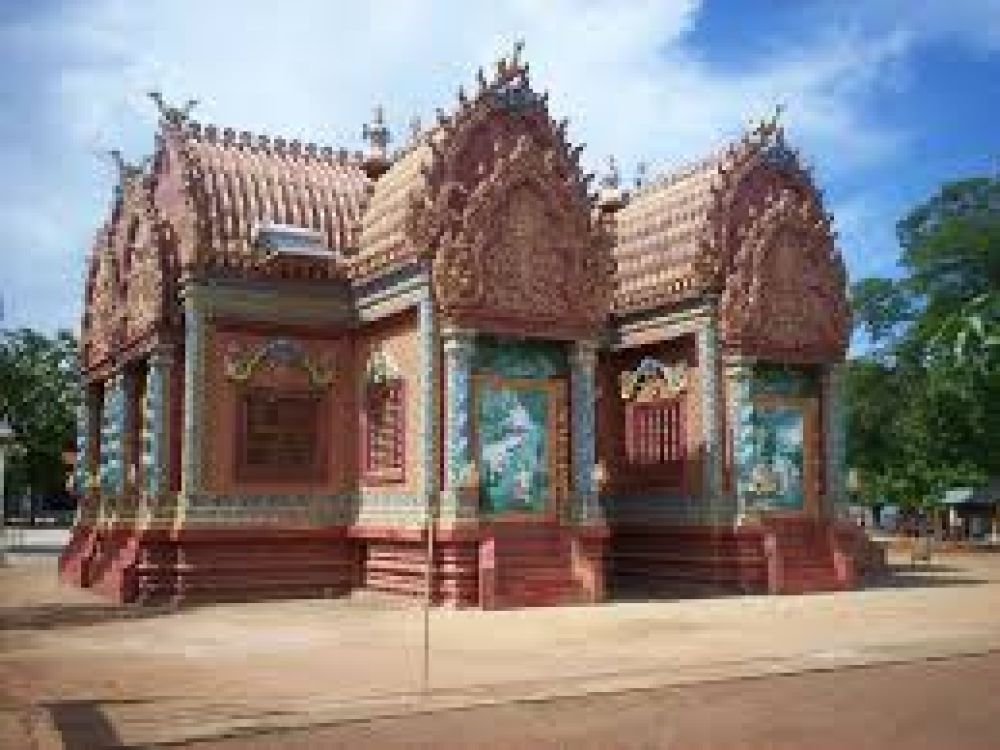

The history of tourism at Wat Hanchey is intimately tied to the rich tapestry of Cambodia's past. Located in the serene province of Kampong Cham, approximately 20 kilometers north of the provincial town, this ancient hilltop pagoda site has been a destination for both religious pilgrimage and historical curiosity for years, witnessing a gradual increase in international visitors as Cambodia's tourism industry developed.
Wat Hanchey is an important historical site that predates the Angkorian era. The site features a mixture of 8th-century Chenla Empire structures and more recent Buddhist pagodas, reflecting the country's long and diverse religious history. It was initially a Hindu temple which was later converted to a Buddhist temple, indicative of the religious transitions in Southeast Asia over the centuries.
During the Khmer Rouge regime (1975-1979), tourism in Cambodia essentially halted due to the tumultuous and tragic period the country faced. However, with the nation's slow recovery and reinstatement as a constitutional monarchy in 1993, there was a resultant revival in the tourism sector.
The recovery of Cambodia's tourism industry in the 1990s brought new attention to historical sites throughout the country. Wat Hanchey started to gain recognition among tourists seeking to explore areas beyond the famed Angkor Wat. The relatively untouched nature of Kampong Cham and its treasures like Wat Hanchey afforded a more authentic and serene experience.
In recent years, as infrastructure has improved and awareness about Cambodia's wider range of cultural and historical attractions has grown, more visitors have included Wat Hanchey in their itineraries. River cruises along the Mekong often stop at Kampong Cham, allowing travelers to visit Wat Hanchey as part of their journey.
Recent trends in tourism at Wat Hanchey reflect a broader interest in sustainable and responsible travel. Tourists are increasingly seeking experiences that allow them to learn about the culture and history of the places they visit, often in ways that support local communities. This has led to a focus on developing community-based tourism initiatives in the area, where visitors can engage with local artisans, dine on traditional Cambodian cuisine, and contribute to the local economy.
Additionally, the resurgence of spirituality and wellness retreats has seen more travelers coming to Wat Hanchey to partake in meditation and mindfulness practices in the tranquil surroundings of the historic site.
COVID-19 Pandemic Impact
However, like many other destinations worldwide, Wat Hanchey experienced a significant drop in visitors due to the COVID-19 pandemic. In response to the pandemic, the Cambodian government and tourism bodies are now working to ensure that destinations like Wat Hanchey can welcome tourists safely, with health and safety protocols in place to protect both visitors and local communities.
As tourism slowly rebounds, Wat Hanchey continues to hold its place as a serene, culturally rich destination, appealing to those interested in history, spirituality, and the beauty of Cambodia's landscape. With its historical significance and ongoing developments in sustainable tourism, Wat Hanchey remains a symbol of Cambodia's resilience and diversity in the face of challenges, both past and present.